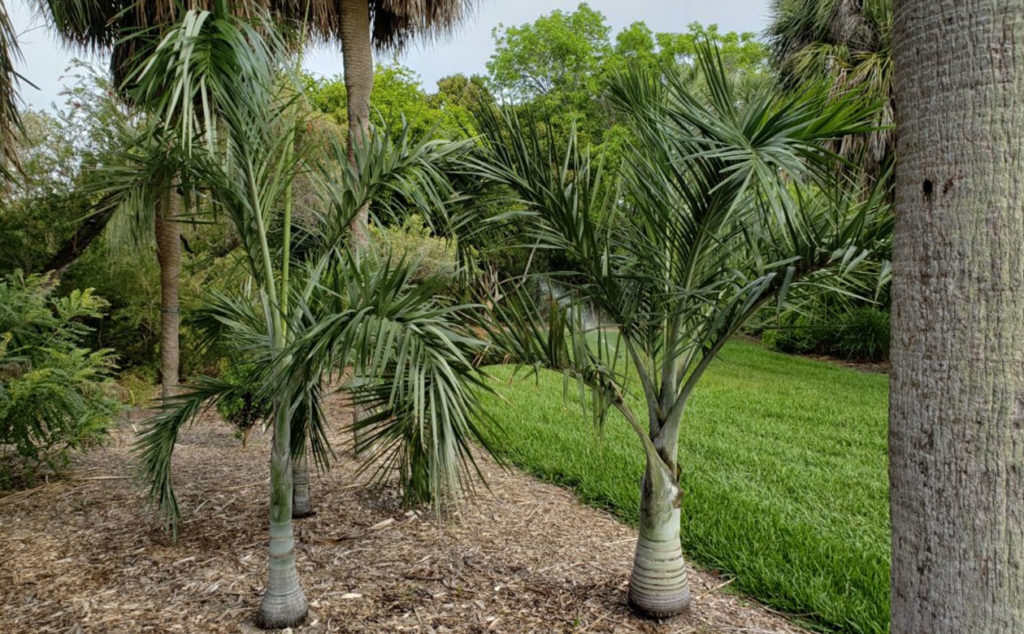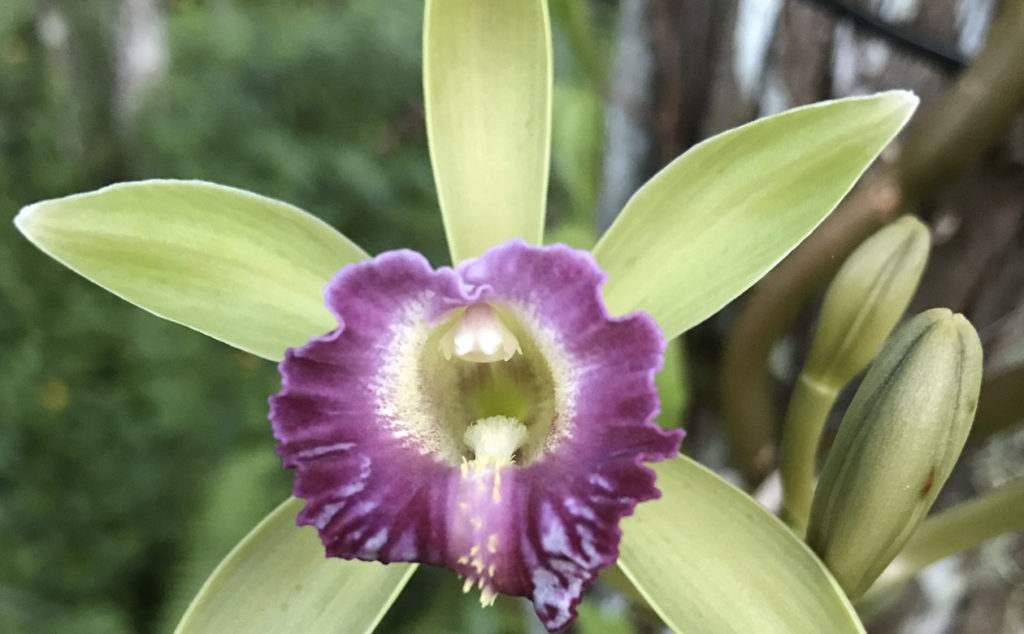NTBG’s garden in Florida, The Kampong, is home to over a century’s worth of horticultural history and exotic plant collections. What began as a pioneer doctor’s farm in 1885, was transformed by botanist and plant explorer Dr. David Fairchild after he and his wife purchased the narrow strip of land fronting Biscayne Bay in south Miami in 1916. Over the nearly four decades Fairchild lived at The Kampong, he planted the property with many of the fruit trees, medicinal plants, and tropical ornamentals that he so famously collected from around the world during his tenure as the U.S. Department of Agriculture’s chief plant collector.

Today, many of Fairchild’s collections survive and have been augmented by hundreds of other plants introduced by successive directors and curators. With over a thousand species and varieties, The Kampong is Miami’s garden oasis, a museum of exotic flora in the heart of Coconut Grove.
Much of our focus at The Kampong is caring for David Fairchild’s heritage collections and preserving his horticultural legacy. Less well known, however, are our efforts to grow plants native to Florida, some of which are endangered. In doing so, we fulfill a dual role: conservation of native flora and public education.
Confined to a long, narrow eight-acre site already filled with mature plantings, limits what we can do, but we have chosen around ten species of endangered native Florida species to demonstrate the importance of local conservation. Our primary goal is to cultivate endangered species in a way that will inspire Kampong visitors and members of the community to practice plant conservation at home.
With the right education and resources, conservation can be done on a small scale in a botanical garden as well as in your own backyard. Our native conservation efforts began by working with the Institute for Regional Conservation, a local group of botanists, ecologists, and policy makers who understand how habitat loss has driven many species native to South Florida to extinction, leaving others with fewer than 50 individuals in the wild. In one notable case, the crenulate lead plant (Amorpha crenulata), a perennial shrub, has only five known wild specimens. Fortunately, several hundred exist in nurseries, available for replanting.
It’s important to note the difference between conserving plants cultivated from wild-collected stock versus cultivated stock. Classic methods of conservation call for a plant collector to gather seeds from plants in their native habitat. The collector also records details of location, soil type, altitude, and nearby plant types. That information is then databased and can be shared globally.
Ideally plants are grown and repopulated into the wild. Seed is often stored for a long time so that wild genetic material is available to other gardens or for future outplanting.
Conservation using cultivated plants from wild collected seed is a newer tactic often practiced in areas where ethical and permitted nursery growers rescue seed of plants threatened by development and habitat loss. In Florida, this is sadly very common. Nurseries which specialize in native plant culture do a great job of introducing very rare native plants into local cultivation. Cultivating very rare species in nurseries also reduces the poaching of wild plants by offering an alternate source of planting material.
The prevention of poaching is one of the main reasons we chose to grow particular species of Everglades orchids. There’s a mystique associated with the dark, dense flooded cypress forests of the Everglades that seems to fuel the poacher’s hunger for orchids. As an avid orchid grower myself, I can testify to the interest orchid growers have in certain native species and the extraordinary demand they draw.
With advice from the Naples Botanical Garden and help from the Florida Fish and Wildlife Commission, we acquired half a dozen healthy cowhorn orchids (Cyrtopodium punctatum), one of our region’s most heavily-poached native species. Seeds were legally collected from wild specimens in the Fakahatchee Strand Preserve State Park, sent to the Atlanta Botanical Garden to grow to near-adult plants, and then shipped back to the Commission staff in Naples.
Commission staff then climbed thirty feet into native trees to mount the orchids securely, beyond the reach of poachers. The Kampong now has a small population of this species as well as four other native Florida orchids mounted in carefully monitored locations where we use them for native conservation education and outreach. One of our newest acquisitions is a rare leafless vanilla orchid (Vanilla barbellata), native to a small area in the heart of the Everglades.

Orchids can be hard to grow from seed, but there are expert facilities and laboratories throughout the country which do so commercially. One of our goals is to show how easily these orchids can be acquired from cultivated sources and grown at home. We emphasize the point that endangered plants are not necessarily difficult to grow, just hard to find in their habitats.
One of our best examples of a South Florida native is the red stopper tree (Eugenia rhombea) which is quite rare in the wild, but common in landscaping. Easy to find, grow and maintain, it is a superior landscape plant for a wide range of conditions, both commercial and residential, as a stand-alone or hedge. Slow growing, pest free, and suitable as wildlife habitat, red stopper is a perfect example of the conservation-by-cultivation concept.
Educating our community about spending a little extra for the right plant can help save time and money later. Using endangered native species, either as an accent or as foundation plantings, can accomplish many goals at once. We strive to help visitors understand not only conservation on a regional scale, but in their home gardens as well.
One of our biggest challenges in promoting local landscaping conservation is the lack of knowledge of using the right native plant for the right location and where to find native plants.
As a small garden filled with a century’s worth of mature heritage collections, we don’t have the space for larger, more ambitious conservation efforts. What The Kampong does have is a dedicated staff who know how to incorporate native flora into appropriate parts of the garden. Taking advantage of our monsoon-Arizona climate extremes, and working with local native plant nurseries, we have been successful with our efforts in Florida horticultural conservation .
While NTBG’s staff in Hawai‘i carry out their own horticulture and conservation of the most endangered plants in the Pacific, here at The Kampong we practice native conservation on a scale commensurate with our size. In our urban setting, we provide a peaceful oasis where visitors can connect with nature, contemplate wildlife, and learn how to counter habitat destruction, invasive species, plant disease, and the loss of biodiversity. Our goals are modest, attainable, and usable by every visitor.
At The Kampong, even as we preserve the heritage collection of the botanist who introduced many of America’s favorite edible and ornamental plants, we also understand how native plants form the backbone of ecology and the importance of conserving and appreciating them. Ensuring the survival of native plants, whether in Florida, Hawai‘i, or elsewhere is a critical task and an effort worthy of support.